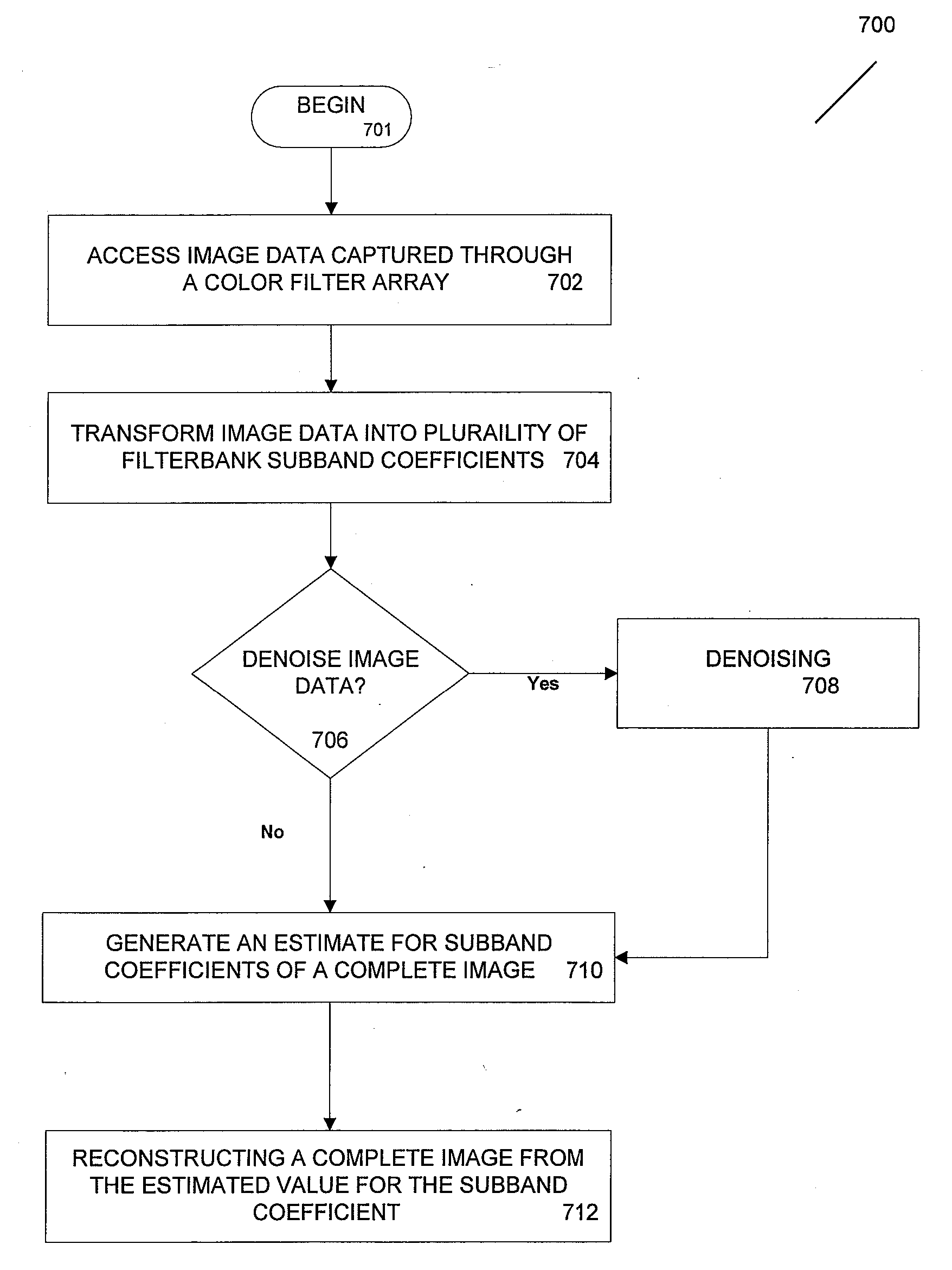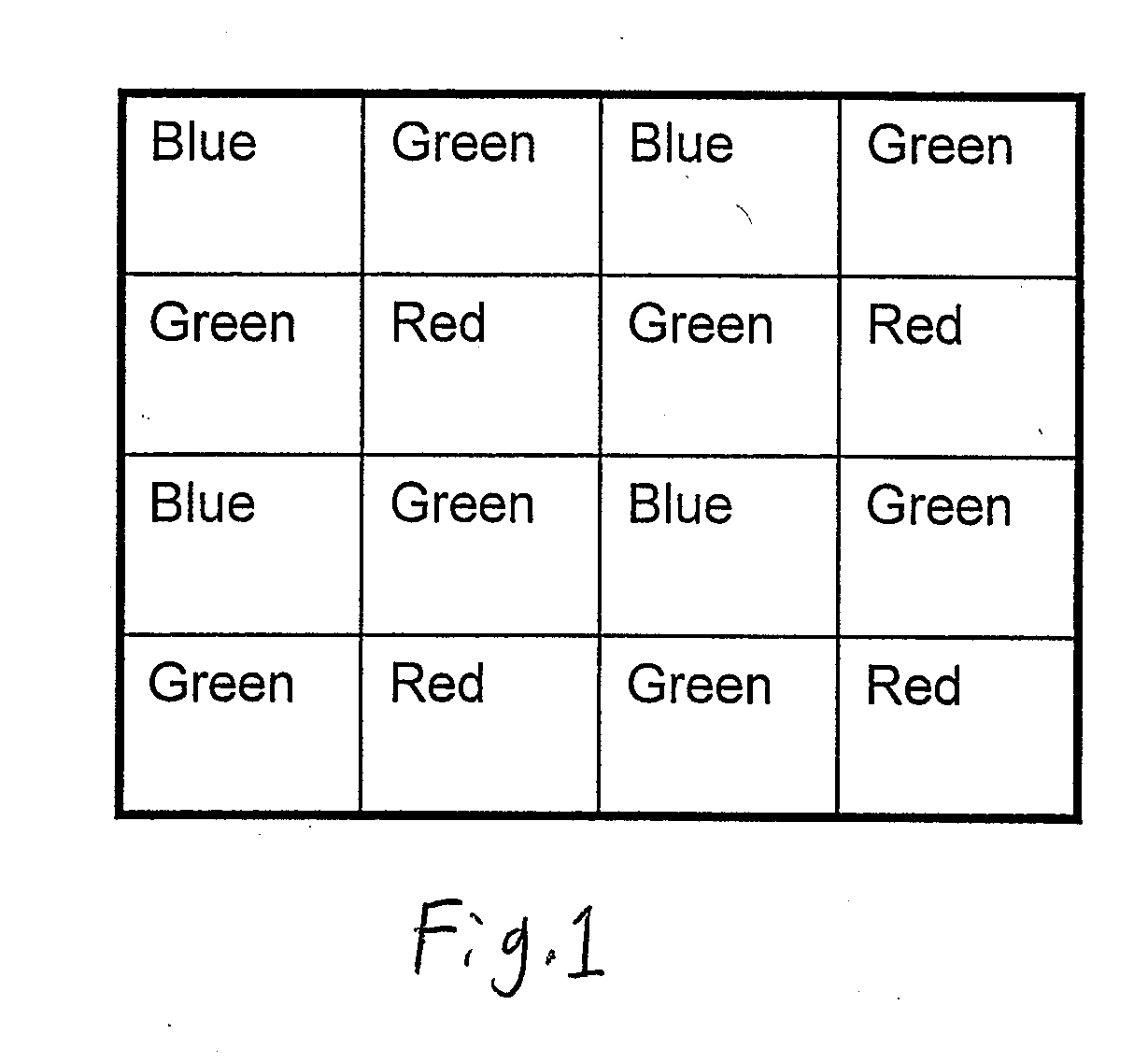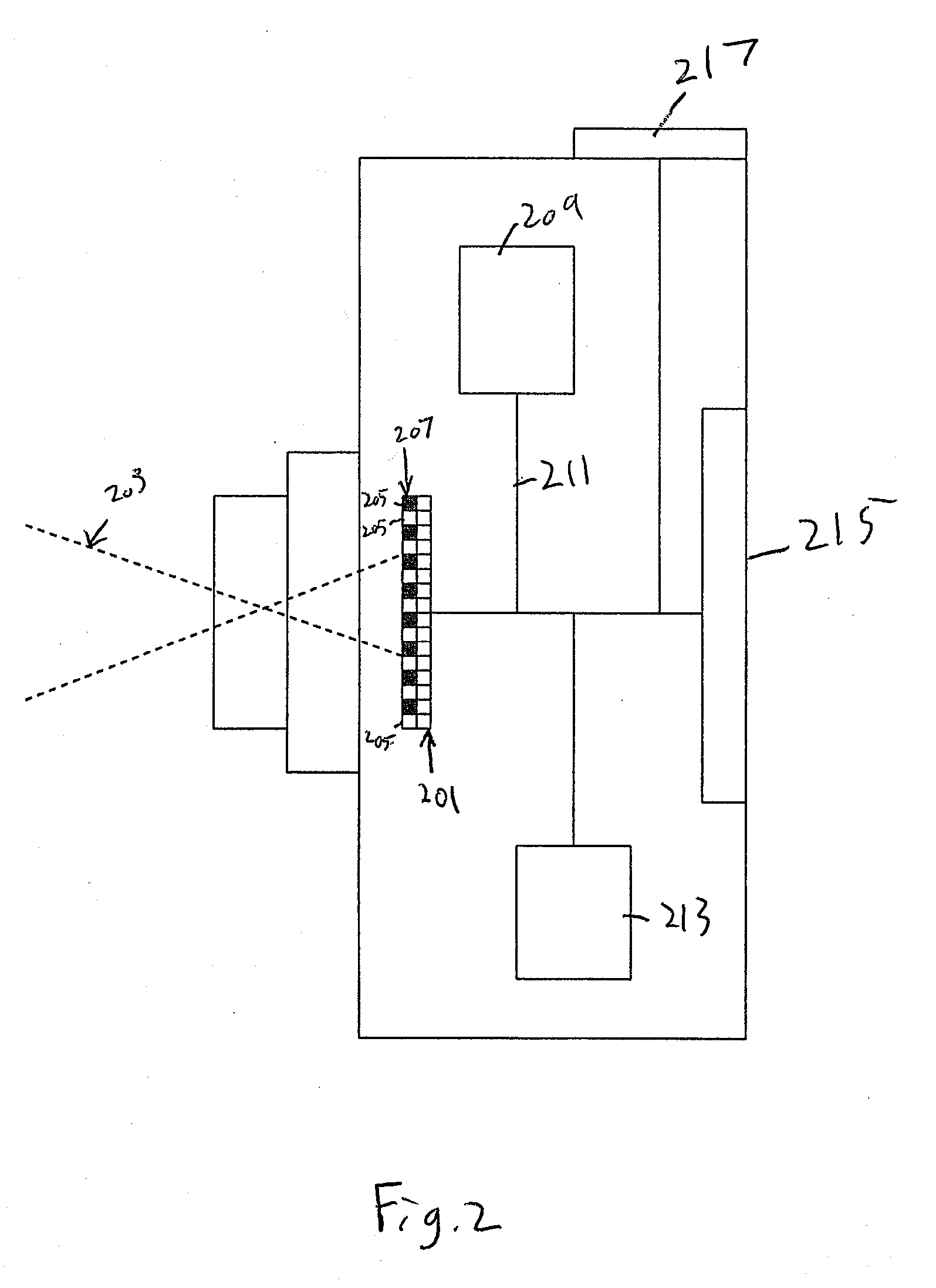Framework for wavelet-based analysis and processing of color filter array images with applications to denoising and demosaicing
a color filter array and wavelet-based analysis technology, applied in the field of image acquisition, can solve problems such as inacceptable visual distortions and artifacts, and achieve the effect of reducing computational complexity
- Summary
- Abstract
- Description
- Claims
- Application Information
AI Technical Summary
Benefits of technology
Problems solved by technology
Method used
Image
Examples
process example
[0057]FIG. 7 illustrate an example of a process implementing some of the features discussed above. In particular, FIG. 7, shows process 700 initiated at 701 by accessing image data captured through a color filter array at 702. One should appreciate that the image data may be received directly from a CMOS sensor for example and transmitted to an image processor as discussed with respect to certain system embodiments above. One should also appreciate that the image data may be stored for later access and the medium upon which the data is stored may be transmitted or physically transported to a system upon which the image data is processed.
[0058]Once the image data has been accessed, it is transformed into a plurality of filterbank subband coefficients by passing the image data through filterbanks at 704. The filterbanks may be adapted to conform to the Smith-Barnwell properties and enabling representation of the transformed image data as wavelets. In particular, Haar and Daubechies wa...
PUM
 Login to View More
Login to View More Abstract
Description
Claims
Application Information
 Login to View More
Login to View More - R&D
- Intellectual Property
- Life Sciences
- Materials
- Tech Scout
- Unparalleled Data Quality
- Higher Quality Content
- 60% Fewer Hallucinations
Browse by: Latest US Patents, China's latest patents, Technical Efficacy Thesaurus, Application Domain, Technology Topic, Popular Technical Reports.
© 2025 PatSnap. All rights reserved.Legal|Privacy policy|Modern Slavery Act Transparency Statement|Sitemap|About US| Contact US: help@patsnap.com



